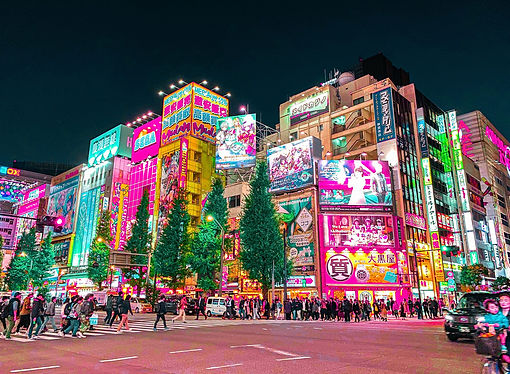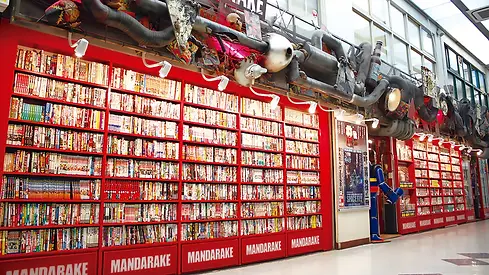
AKIHABARA
Akihabara pulses with the vibrant energy of anime, gaming, and otaku culture, making it a dreamland for enthusiasts and explorers.
CHECK OUT THESE PLACES

AKIHABARA
RADIO KAIKAN
A multi-story building packed with electronics, anime, and hobby shops.
1 Chome-15-16 Sotokanda, Chiyoda City, Tokyo 101-0021
MANDARAKE COMPLEX
A massive second-hand store specializing in manga, anime, and collectibles.
3 Chome-11-12 Sotokanda, Chiyoda City, Tokyo 101-0021


YODOBASHI CAMERA
A giant electronics store with everything from gadgets to games.
1 Chome-1 Kanda Hanaokacho, Chiyoda City, Tokyo 101-0028
SUPER POTATO
A retro gaming paradise with classic consoles and games.
1 Chome-11-2 Sotokanda, Chiyoda City, Tokyo 101-0021


AKIHABARA UDX
A commercial complex with dining, shopping, and events.
4 Chome-14-1 Sotokanda, Chiyoda City, Tokyo 101-0021
HISTORY OF AKIHABARA
Akihabara, often referred to as "Electric Town," is a district in Tokyo that has evolved into a global hub for electronics, anime, and otaku culture. Its transformation began in the post-World War II era, rooted in Japan's rapid modernization and the neighborhood's strategic location.
Before the war, Akihabara was a quiet residential area with little commercial significance. However, the district’s proximity to major rail lines made it a natural hub for black market trading during the chaotic post-war period. The shortage of goods and the demand for everyday items led to a flourishing black market, and Akihabara became a center for the trade of household appliances and radio components.
The 1940s and 1950s marked the initial transformation of Akihabara into an electronics district. Many of the black market vendors transitioned into legitimate businesses, establishing small shops that specialized in selling radio parts. As Japan entered a period of rapid economic growth, the demand for consumer electronics surged. Akihabara's shops began to specialize in all kinds of electronic components, catering to engineers, hobbyists, and eventually, the growing consumer market.
By the 1960s, Akihabara had earned its nickname "Electric Town." The district was renowned for its wide array of electronic goods, from household appliances to the latest gadgets. It became the go-to place for both professionals and amateurs looking to build or repair electronic devices. The area's reputation grew internationally as well, attracting tech enthusiasts from around the world.
The 1980s brought a new wave of transformation to Akihabara. As Japan became a global leader in electronics and technology, the district shifted focus towards the burgeoning home computer and video game markets. Stores began to stock the latest computers, gaming consoles, and software, further cementing Akihabara's status as a tech mecca.
The 1990s and 2000s saw another pivotal shift in Akihabara’s identity, as it became the epicenter of otaku culture. The rise of anime, manga, and video games as mainstream entertainment led to the proliferation of shops specializing in related merchandise. Akihabara's streets filled with stores selling anime figures, manga, DVDs, and cosplay costumes, attracting fans from across Japan and the globe. The area also became known for its themed cafes, such as maid cafes, where patrons could immerse themselves in a unique subculture experience.
Today, Akihabara is a vibrant district that seamlessly blends its past with the present. It remains a top destination for electronics, offering everything from the latest gadgets to vintage tech components. Simultaneously, it is a cultural hub for anime and manga enthusiasts, with countless stores, cafes, and events dedicated to otaku culture. Akihabara's evolution from a post-war black market to Tokyo's Electric Town is a testament to its adaptability and its central role in Japan's technological and cultural development.

REGIONS
Discover lesser-known places in Japan.
Kagawa
Nagano
Fukuoka
Sapporo
Fukushima
Hiroshima
Naha